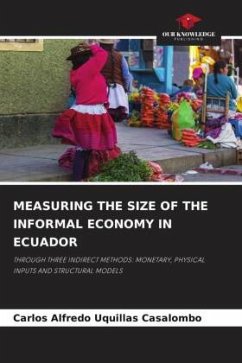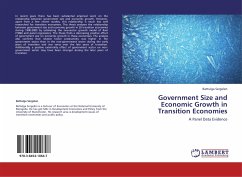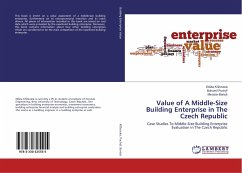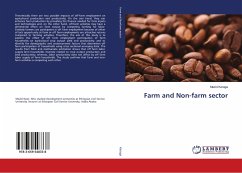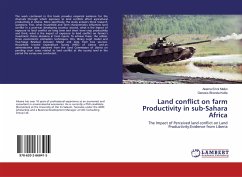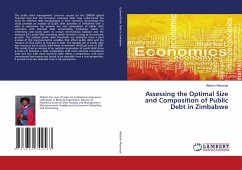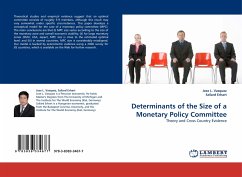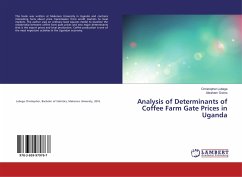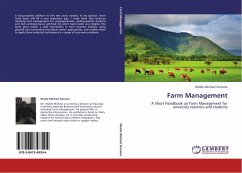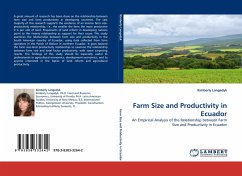
Farm Size and Productivity in Ecuador
An Empirical Analysis of the Relationship between Farm Size and Productivity in Ecuador
Versandkostenfrei!
Versandfertig in 6-10 Tagen
32,99 €
inkl. MwSt.

PAYBACK Punkte
16 °P sammeln!
A great amount of research has been done on the relationship between farm size and farm productivity in developing countries. The vast majority of this research supports the existence of an inverse farm size-productivity relationship, i.e., the smaller the farm the more productive it is per unit of land. Proponents of land reform in developing nations point to the inverse relationship as support for their cause. This study examines the relationship between farm size and productivity in the South American country of Ecuador, using data collected from farm operators in the Parish of Bolívar in ...
A great amount of research has been done on the relationship between farm size and farm productivity in developing countries. The vast majority of this research supports the existence of an inverse farm size-productivity relationship, i.e., the smaller the farm the more productive it is per unit of land. Proponents of land reform in developing nations point to the inverse relationship as support for their cause. This study examines the relationship between farm size and productivity in the South American country of Ecuador, using data collected from farm operators in the Parish of Bolívar in northern Ecuador. It goes beyond the farm size-land productivity relationship to examine the relationship between farm size and total factor productivity, with some surprising results. The findings of this study should be especially useful to professionals in agricultural economics, development economics, and to anyone interested in the topics of land reform and agricultural productivity.



